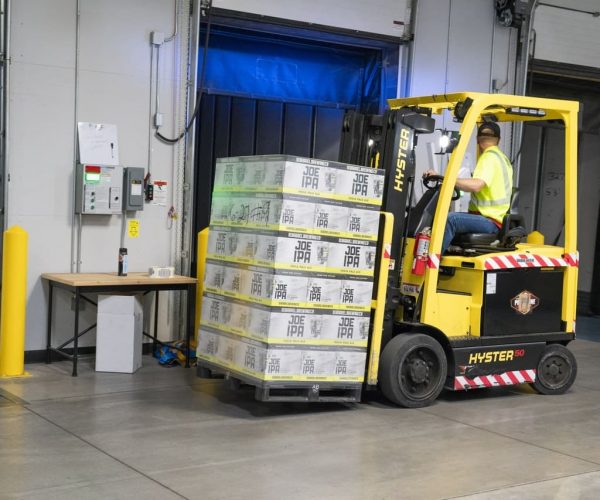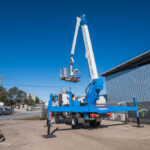Lift and shift logistics is the end-to-end planning and execution of moving heavy equipment from A to B with minimal downtime. It covers surveys, RAMS, permits, rigging, lifting, transport, installation and recommissioning. Done right, it’s safe, compliant and quick.
What does “lift and shift logistics” mean?
It’s the disciplined process of lifting, moving and setting industrial machinery or production assets, often within live factory environments. Think decommissioning a line, relocating a mixer, installing a new multi-head weigher, or moving an entire production cell between sites. A proper programme includes surveys, lift plans, specialist rigging, cranes or gantries, machinery skates, transport, offload, positioning, re-levelling, fixings and handover.
FESS Group delivers lift and shift as a stand-alone service or as part of wider M&E and project work, with 35+ years’ factory experience and 24/7 mobilisation.
How does lift and shift logistics work — step by step
Discovery and site survey
A project engineer confirms scope, weights, dimensions, centres of gravity, utilities, access constraints, slab loading and production windows. They check egress routes, doorway heights, mezzanines, pits, fragile surfaces and overhead obstructions. For multi-site moves, both ends are surveyed.
Methodology and RAMS
The team produces a method statement and risk assessment covering rigging technique, exclusion zones, signalling and contingency plans. Where lifting equipment is used, the operation must comply with LOLER. If you need a refresher, review the HSE guidance on Lifting Operations and Lifting Equipment Regulations 1998 (LOLER).
Permits and coordination
This covers hot-work permits, electrical isolations, lockout-tagout, confined-space sign-off and, where relevant, road permissions for abnormal loads. Good logistics means production, facilities, H&S and the contractor run to one schedule and one comms channel.
Decommissioning and make-safe
Isolate power, fluids, pneumatics, product feeds and controls. Label and protect sensitive interfaces. In food and pharma, plan hygiene barriers and post-move clean-down. FESS Group regularly handles decommissioning and relocations, underpinned by RAMS specific to the load, route and environment.
Rigging and lift
Depending on load and environment, the team may use gantries, mobile cranes, pick-and-carry cranes, versa-lifts, toe jacks, skates, air skates or machine movers. The lift plan specifies pick points, sling types, shackles, spreader beams and signalling. In tight plants, low-headroom gantries and skate systems keep aisles open.
Transport and handling
For internal moves, loads are skated on protected routes to prevent slab damage. For site-to-site moves, machines are secured on trailers with compliant load restraint. Weather, route restrictions and delivery windows are built into the programme.
Positioning, levelling and fixings
At the new location the machine is set, levelled and anchored. Services are presented to point, then the machine is reconnected to power, control, air, water, product feeds and extraction.
Recommissioning and handover
Controls are checked, safeties verified and test runs confirm throughput. In production environments the goal is minimal downtime and a clean return to plan.
What equipment is commonly used?
- Rigging: toe jacks, machinery skates, air skates, turntables, spreader beams.
- Lifting: mobile cranes, pick-and-carry cranes, gantries, versa-lifts, forklift trucks with attachments.
- Protection: floor mats, steel plates, edge protection, shrink wrap, anti-static covers.
- Measuring and setup: laser levels, torque tools, alignment instruments.
- Controls and utilities: temporary panels, safe isolation kits, lockout devices.
Who typically needs lift and shift logistics?
- Food and drink manufacturers upgrading lines or re-configuring layouts.
- Pharmaceutical sites with strict GMP and validation requirements.
- Petrochemical and process plants handling complex, high-value equipment.
These sectors run on tight windows and exacting standards. An experienced partner in lift and shift logistics reduces risk and protects throughput.
How long does a lift and shift take?
It depends on weight, access, complexity and the commissioning envelope. As a guide, a single machine move within a plant can be completed in one to two shifts with planning. Full line moves across sites often run two to five days including mechanical/electrical reconnection and QA sign-off. Use one team to coordinate trades and suppliers to compress timelines — that’s the model FESS Group runs across project management, M&E and lift and shift.
How much does lift and shift logistics cost?
Costs are driven by:
- Weight and complexity of the lift.
- Access constraints such as low headroom, stairs or mezzanines.
- Crane, gantry or versa-lift requirements and any road permits.
- Electrical and mechanical disconnection/reconnection scope.
- Cleaning and validation in regulated environments.
On budgeting, many projects land in a £5k–£20k+ scope band once surveys and basic reconnection are included.
A sensible approach is a fixed-scope quote from a detailed survey, plus a schedule of rates for variables. Where factories lack in-house engineering capacity, bringing in an experienced team often reduces total cost by avoiding downtime and rework. FESS Group provides integrated M&E and lift and shift with a single point of accountability, on time and on budget.
What about compliance and safety?
- LOLER: lifting equipment and accessories must be suitable, examined and used by competent people.
- PUWER and Electricity at Work: ensure guarding, controls and isolations are correct before re-energising.
- RAMS: risk assessments and method statements must be specific to the load, route and environment.
- Hygiene and validation: food and pharma lines need documented clean-down and verification.
Contract managers typically ask for on-time delivery, secure installation and full compliance — FESS Group operates with SafeContractor, ECA and IOSH credentials to keep programmes moving.
Why choose a specialist partner?
An engineer-led partner brings integrated project management, M&E expertise and dedicated lift and shift capability. FESS Group combines 35+ years on factory floors with 24/7 rapid response and a one-team delivery model for safe moves with minimal disruption.
Real-world examples
- Factory relocation and decommissioning: precision planning and methodical execution when moving assets between sites — see FESS Group case studies.
- Food manufacturing upgrades: end-to-end works including fabrication, automation and CDM coordination, with measurable throughput gains.
FAQ
Is lift and shift logistics only for heavy machinery?
No. It covers any controlled move of equipment that requires formal planning, rigging and compliance. The core principles are the same for 500 kg and 50 tonnes.
Can you do lift and shift in a live factory?
Yes — with tight RAMS, segregation and short production windows. Low-headroom gantries and skates are often used to keep aisles open.
What if I need electrical and mechanical reconnection too?
Choose a provider with in-house M&E so you don’t juggle multiple contractors. This improves accountability and accelerates recommissioning. FESS Group provides certified M&E with a 1-year parts warranty on M&E components.


